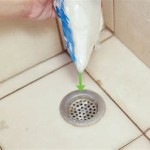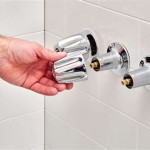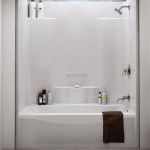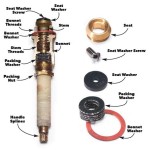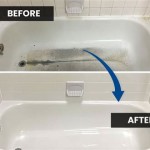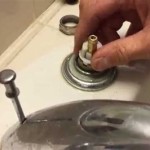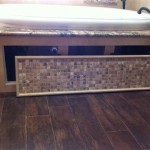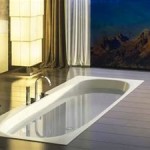Water Bathtub Plug: A Comprehensive Guide
The water bathtub plug, often underestimated, plays a crucial role in the functionality and enjoyment of the bathing experience. Its primary purpose is to create a watertight seal, preventing water from draining out of the bathtub, allowing for a comfortable and relaxing soak. While seemingly simple, the design and materials used in bathtub plugs have evolved over time, addressing issues of durability, efficiency, and aesthetic appeal. This article provides a comprehensive overview of the water bathtub plug, exploring its various types, materials, common problems, maintenance tips, and factors to consider when selecting a replacement.
The fundamental principle behind a bathtub plug is based on creating a barrier that obstructs the drain opening. This barrier must be flexible enough to conform to the irregularities of the drain surface but also robust enough to withstand the pressure of the water above it. The effectiveness of a bathtub plug directly impacts water conservation and the overall usability of the bathtub. A poorly functioning plug can lead to water wastage, increased utility bills, and a frustrating bathing experience.
Types of Water Bathtub Plugs
The market offers a diverse range of bathtub plugs, each with its own unique mechanism and advantages. Understanding the different types is crucial for selecting the most suitable option for a specific bathtub and personal preferences.
1. Stopper Plugs: These are the most traditional and recognizable type of bathtub plug. They typically consist of a rubber or silicone stopper attached to a chain or metal rod. The stopper is manually inserted into the drain opening to create a seal. Stopper plugs are generally inexpensive and easy to use, but their effectiveness can diminish over time as the rubber or silicone deteriorates.
2. Flip-It/Toe-Touch Drains: These plugs are integrated into the drain assembly and are operated by a lever or a toe-activated mechanism. When the lever or toe-touch is engaged, the plug rotates to either seal or open the drain. Flip-It drains offer a more streamlined and aesthetically pleasing look compared to stopper plugs. However, their mechanism can be more complex, potentially leading to more frequent maintenance.
3. Push-Button Drains: Similar to Flip-It drains, push-button drains are also integrated into the drain assembly. They operate by pressing a button located on the drain cover. Pressing the button once seals the drain, while pressing it again releases the seal. Push-button drains are known for their ease of use and clean design. However, they can be prone to clogging with hair and debris, requiring periodic cleaning.
4. Lift-and-Turn Drains: These plugs feature a knob or handle that is lifted and turned to either seal or open the drain. The mechanism typically involves a plunger that moves up and down to control the water flow. Lift-and-turn drains provide a secure seal and are relatively easy to operate. However, they can be more challenging to install and may require professional assistance.
5. Pop-Up Drains: These drains are activated by a lever located near the faucet. When the lever is pulled, a spring-loaded mechanism raises or lowers the plug to control the water flow. Pop-up drains offer a convenient and hands-free operation. However, their complex mechanism can be susceptible to malfunctions and repairs.
6. Universal Plugs: Designed to fit a wide range of drain sizes and shapes, universal plugs offer a versatile solution for bathtubs with non-standard drain openings. These plugs typically consist of a flexible material that can conform to various drain configurations. Universal plugs are a convenient option for those who need a quick and easy replacement without knowing the exact drain size.
Materials Used in Water Bathtub Plugs
The materials used in the construction of a water bathtub plug significantly impact its durability, sealing ability, and overall lifespan. Common materials include rubber, silicone, metal, and plastic. Each material offers its own set of advantages and disadvantages.
1. Rubber: Rubber is a traditional material used in bathtub plugs due to its flexibility and ability to create a tight seal. Rubber plugs are generally inexpensive and readily available. However, rubber can deteriorate over time due to exposure to water, chemicals, and temperature fluctuations, leading to cracking and loss of elasticity. This degradation can reduce the plug's effectiveness and require frequent replacements.
2. Silicone: Silicone is a synthetic polymer that offers superior resistance to water, chemicals, and temperature extremes compared to rubber. Silicone plugs are more durable and long-lasting than rubber plugs. They also maintain their flexibility and sealing ability over a longer period. While silicone plugs are typically more expensive than rubber plugs, their extended lifespan makes them a cost-effective option in the long run.
3. Metal: Metal, such as brass or stainless steel, is often used in the construction of the drain assembly and some types of plugs, such as Flip-It and lift-and-turn drains. Metal components provide strength and durability to the overall drain system. However, metal can be susceptible to corrosion and mineral buildup, which can affect the plug's functionality. Regular cleaning and maintenance are necessary to prevent these issues.
4. Plastic: Plastic is used in some components of bathtub plugs, particularly in the drain housing and some types of universal plugs. Plastic is lightweight and inexpensive, but it may not be as durable as other materials. Plastic components can be prone to cracking and discoloration over time. The quality of the plastic used significantly impacts the plug's overall lifespan.
Common Problems and Maintenance of Water Bathtub Plugs
Despite their simple design, bathtub plugs can experience various problems that affect their performance. Regular maintenance is essential to prevent these issues and prolong the lifespan of the plug.
1. Leaking: A leaking bathtub plug is the most common problem. This can be caused by a deteriorated rubber or silicone seal, mineral buildup on the drain surface, or an improperly adjusted drain mechanism. To address a leaking plug, the drain surface should be cleaned thoroughly to remove any debris or mineral deposits. If the plug is made of rubber or silicone, it may need to be replaced if it shows signs of cracking or hardening. For integrated drain systems, such as Flip-It or push-button drains, the mechanism may need to be adjusted or lubricated.
2. Clogging: Hair and debris can accumulate around the bathtub plug and inside the drain, causing clogs that impede water flow. Regular cleaning is essential to prevent clogs. Removing the plug and clearing any debris from the drain opening can often resolve minor clogs. For more stubborn clogs, a drain snake or a chemical drain cleaner may be necessary. It is important to use drain cleaners cautiously and follow the manufacturer's instructions to avoid damaging the plumbing.
3. Difficulty Operating: Integrated drain systems, such as Flip-It, push-button, and lift-and-turn drains, can become difficult to operate over time due to mineral buildup or corrosion. Lubricating the moving parts with a silicone-based lubricant can help restore smooth operation. In some cases, the drain mechanism may need to be disassembled and cleaned thoroughly. If the problem persists, the drain assembly may need to be replaced.
4. Corrosion: Metal components of bathtub plugs and drain assemblies are susceptible to corrosion, especially in areas with hard water. Regular cleaning with a mild abrasive cleaner can help remove corrosion and prevent further damage. Applying a protective coating, such as a sealant or wax, can also help protect the metal from corrosion.
5. Staining: Rubber and silicone plugs can become stained over time due to exposure to colored bath products and hard water. Cleaning the plug with a mixture of baking soda and vinegar can help remove stains. In some cases, the staining may be permanent, and the plug may need to be replaced for aesthetic reasons.
6. Preventing Problems: To minimize problems with bathtub plugs, regular cleaning is essential. This includes removing hair and debris from the drain opening after each use, cleaning the plug with a mild detergent and water, and flushing the drain with hot water to prevent buildup. Avoiding harsh chemicals and abrasive cleaners can also help prolong the lifespan of the plug.
When selecting a replacement bathtub plug, several factors should be considered. The first is the type of drain system in the bathtub. If the bathtub has an integrated drain system, such as a Flip-It or push-button drain, a compatible replacement plug will be required. If the bathtub has a standard drain opening, a stopper plug or a universal plug can be used. The size of the drain opening is another important consideration. Measure the diameter of the drain opening to ensure that the replacement plug is the correct size. The material of the plug is also a factor to consider. Silicone plugs are generally more durable and long-lasting than rubber plugs, but they are also more expensive. Finally, consider the ease of installation. Some bathtub plugs are easy to install, while others may require professional assistance.

Bath Tub Drain Stoppers Sink Bathtub Plug Rubber Kitchen Bathroom Laundry Bar Water Stopper Seal With Hanging Ring Com
:max_bytes(150000):strip_icc()/bathtub-drain-stopper-types-2718995-01-35b72b9323884e12bcd7bff7bddc755e.jpg?strip=all)
The 7 Common Types Of Bathtub Drain Stoppers

Blue Silicone Bathtub Drain Cover Bath Plug Tub Stopper And Bathroom Blocker Protector Com

Sink Drain Stopper Bath Tub Multifunctional Bathtub Temu

How To 005 Bathtub Drain Won T Seal

Bathtub Sink Drain Plug Basin Water Stopper Bathroom Temu

Let Your Bathtub Fill Up To The Literal Brim With This Suction Cup Wonder

Is It A Problem To Have Water Around Tub Drain Home Improvement Stack Exchange

Why Water Might Be Coming Out Of Bathtub Drain Instead Going Down Plumbing Pipe Problems

Stainless Steel Bath Plug Drain Stopper Sink Bathtub Water Cap

